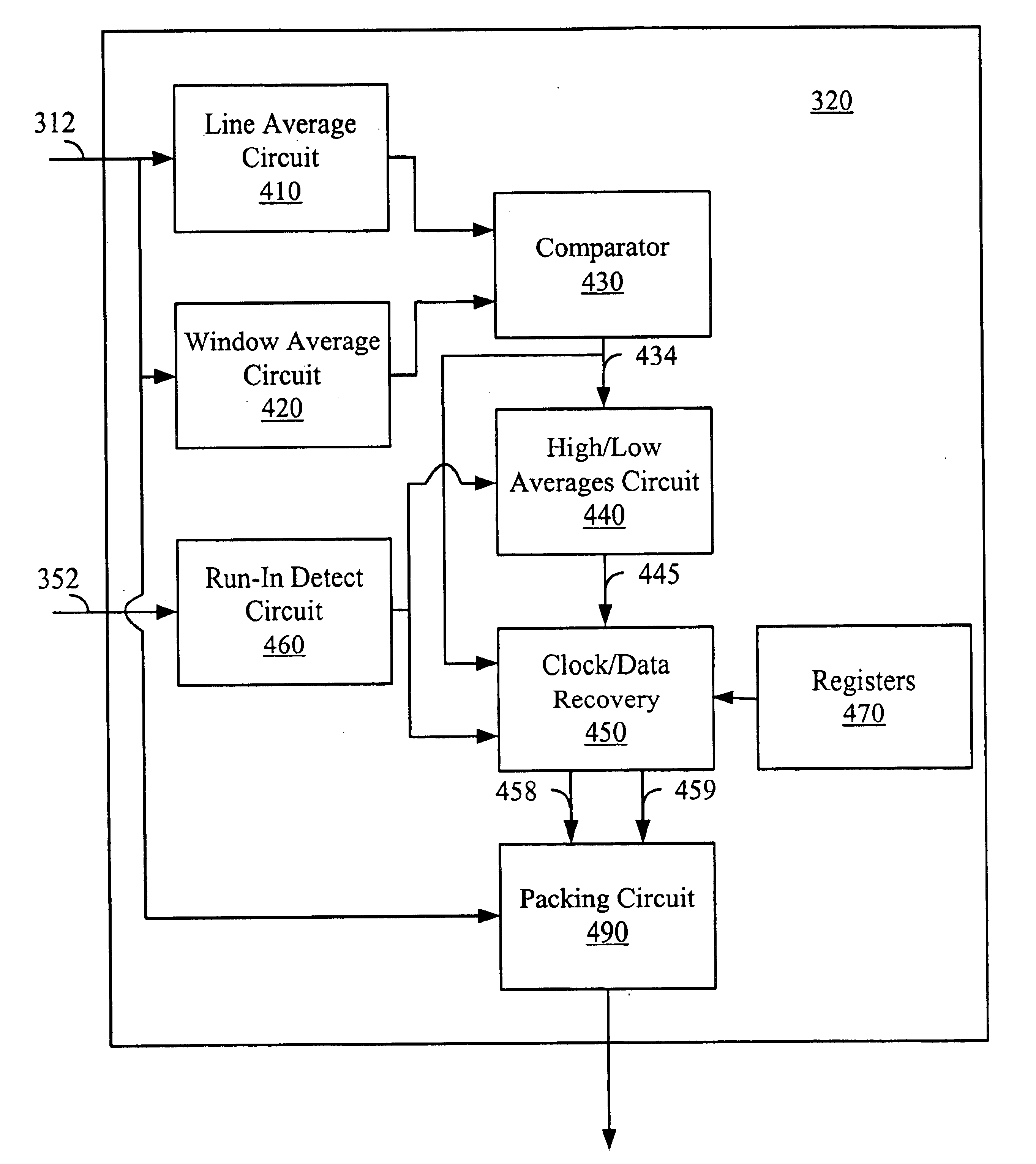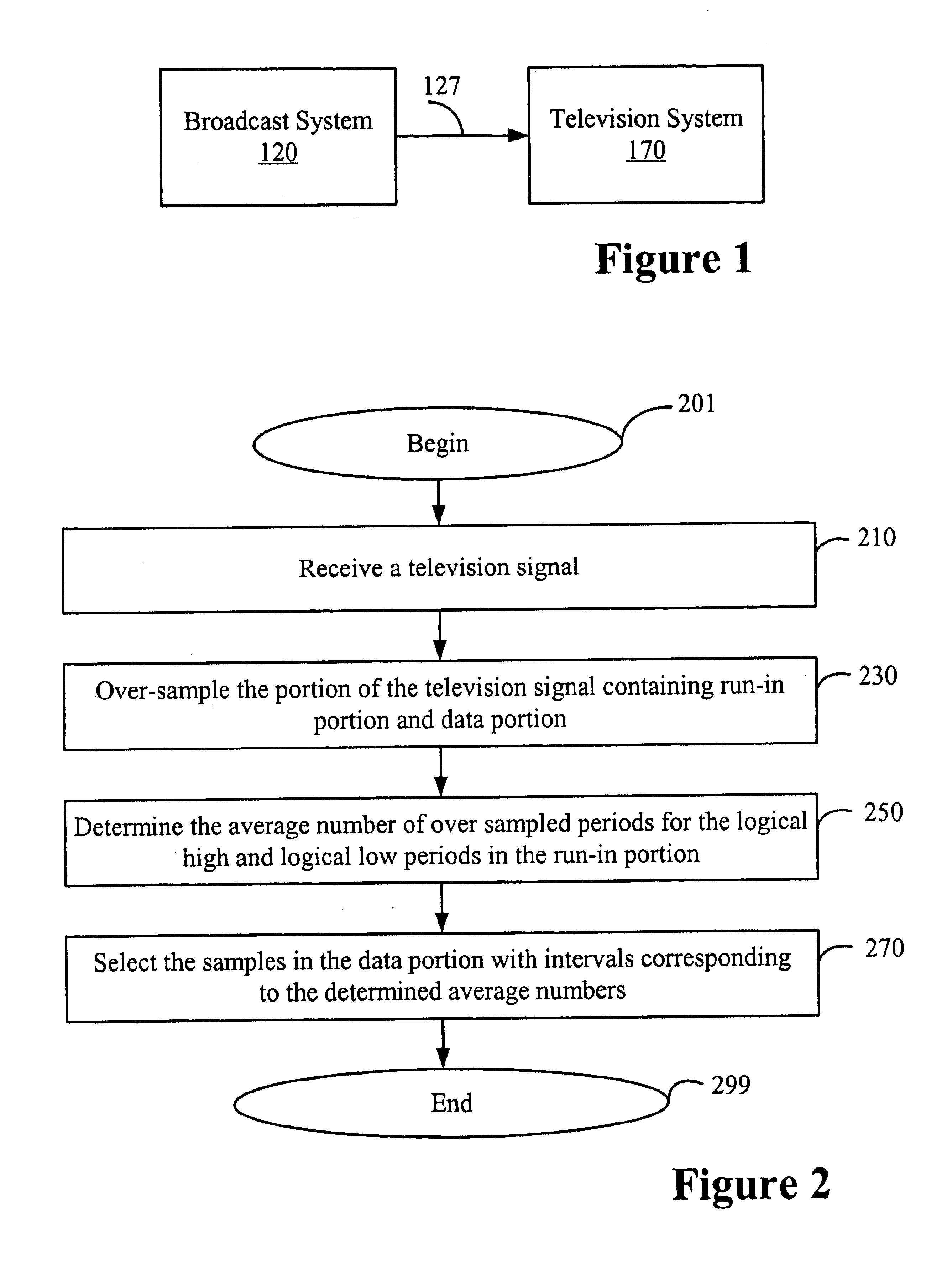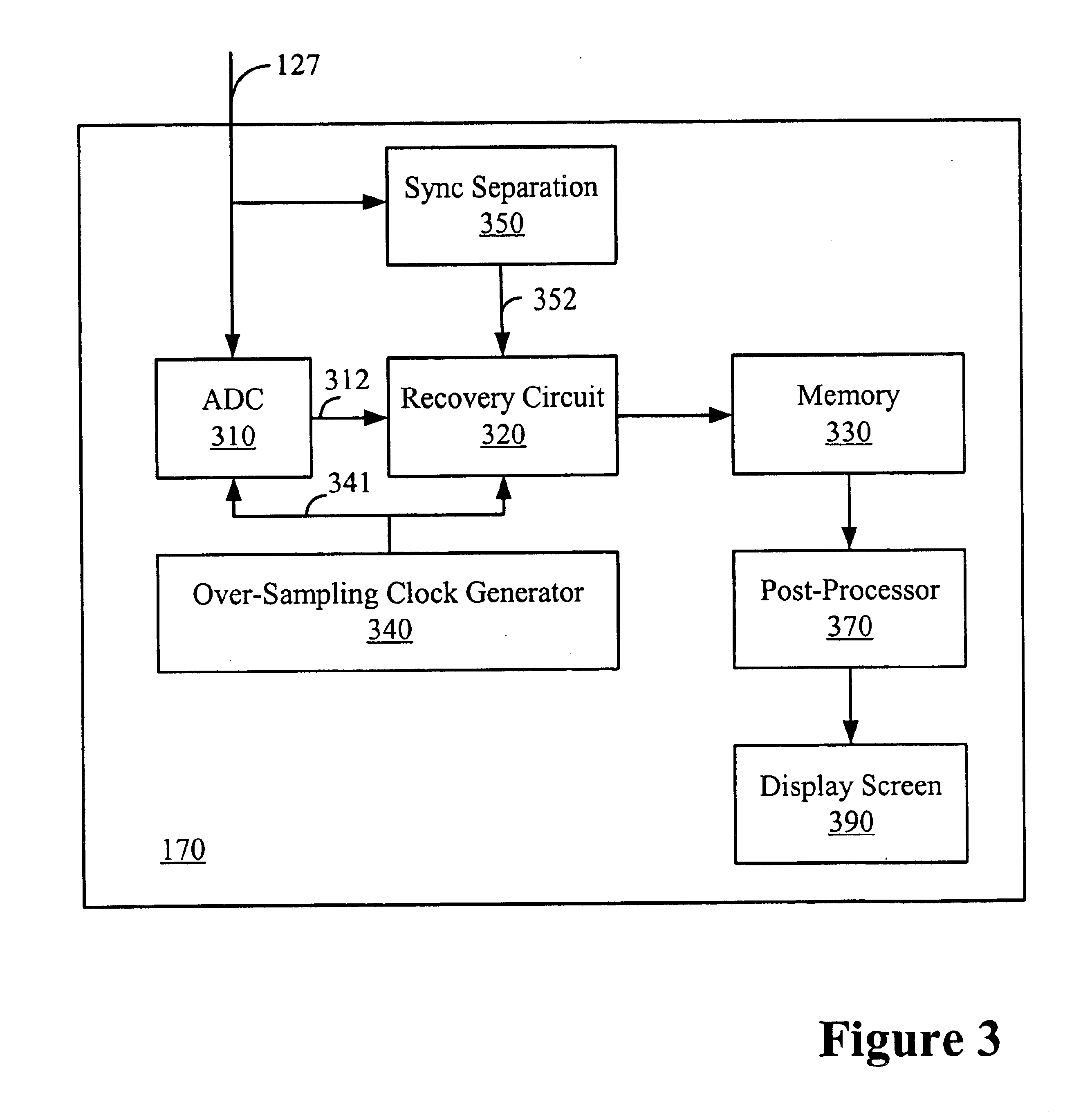Recovering data encoded in television signals
a technology of television signals and data, applied in the field of television systems, can solve the problems of expensive components and inability to accurately synchronize the signal, and achieve the effect of reducing the number of components and reducing the cost of production
- Summary
- Abstract
- Description
- Claims
- Application Information
AI Technical Summary
Benefits of technology
Problems solved by technology
Method used
Image
Examples
Embodiment Construction
1. Overview and Discussion of the Present Invention
The present invention is described in the context of television 170 system of FIG. 1. Broadcast system 120 encodes a clock run-in signal and data in the broadcast signal. A run-in portion generally corresponds to the signal portion which is included for synchronization purpose as is well known in the relevant. For example, broadcast system 120 may encode a clock run in signal followed by closed-captioning data in line 21 of each frame of the television signal.
Television system 170 receives a television signal on broadcast path 127 and recovers the encoded data in accordance with the present invention. Even though the television signal is described as being received from broadcast system 120, it should be understood that television system 170 may receive the signals from a local system (such as a video cassette player). In addition, other types of data (e.g., teletext) may also be recovered in accordance with the present invention. F...
PUM
 Login to View More
Login to View More Abstract
Description
Claims
Application Information
 Login to View More
Login to View More - R&D
- Intellectual Property
- Life Sciences
- Materials
- Tech Scout
- Unparalleled Data Quality
- Higher Quality Content
- 60% Fewer Hallucinations
Browse by: Latest US Patents, China's latest patents, Technical Efficacy Thesaurus, Application Domain, Technology Topic, Popular Technical Reports.
© 2025 PatSnap. All rights reserved.Legal|Privacy policy|Modern Slavery Act Transparency Statement|Sitemap|About US| Contact US: help@patsnap.com



